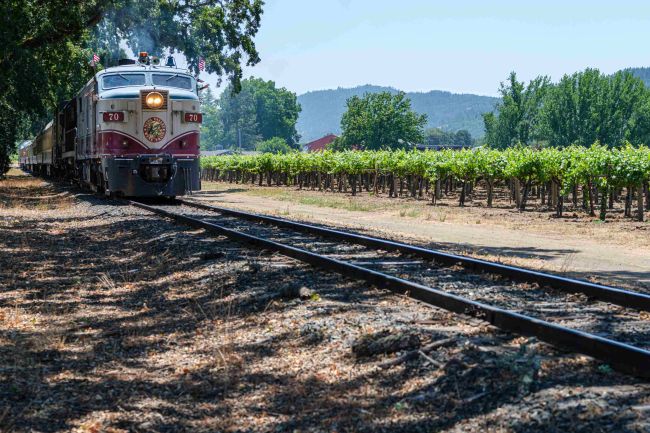What's around the corner?
Long-term forecasting is a vital part of planning for new passenger rail projects, but what about the short term?
Long-term forecasting is a vital part of planning for new passenger rail projects, but what about the short term? Forecasting for the month, week, or even the day ahead is just as important.
Steer Davies Gleave is often appointed to develop long-range forecasts that support the planning, design and financing needs of large rail infrastructure projects and rolling stock procurements. In this work, it is not unusual to predict travel demand, project revenues and transportation network conditions 40 or more years into the future, because the long service life, extended impacts and high costs of such projects require the consideration of a substantial time frame.
Many of the standard quantitative techniques used in transportation forecasting were originally developed to analyze such projects and, when appropriately applied, they are generally well-suited to this purpose.
It is perhaps less widely recognized that the forecasting of rail transportation demand, revenues and conditions in the near-term future can also be very important.
For example, a commuter rail service provider is considering a fare increase and needs to have as precise an estimate as possible of the near-term impact on ridership and revenues.
Similarly, for service planning or budgeting purposes, the operations and finance groups of public transportation agencies may be interested in forecasts of weekly or monthly ridership and revenue over, say, a year ahead.
In short-term forecasting, factors such as service levels, on-time performance, special events and calendar effects – a major sports or entertainment event, the presence of a holiday in a particular week, or the number of weekends during a month – can be important to take into account. Standard transportation forecasting techniques are not designed to do this and are not reliably able to produce forecasts at this level of detail – different methods are needed.
Steer Davies Gleave has recently been involved in several projects in which we developed short-term forecasting tools to meet the financial planning and budgeting needs of our rail operator clients.
We have developed short and medium-term forecasting models for Metro-North Railroad and the Long Island Rail Road in the New York City region and for Translink in Vancouver.
The premise of the forecasting approach is to develop statistical models that account explicitly for both demand and supply factors. Demand for transit is typically generated by a series of factors, including various types of economic activity (both commutation and leisure uses), and is also influenced directly by transportation prices (transit fares and also fuel prices, which reflect the price of alternatives). Supply of transit is represented by service levels.
The development of the models makes use of statistical techniques that are widely used in the social sciences, but have only recently become more prevalent in transportation. The resulting models are typically based on large amounts of data on transit usage, usually at the line, zone or ticket type level of detail.
By observing thousands of ticket transactions, the resulting models achieve high levels of reliability for both forecasting purposes and scenario analysis, such as predicting the impacts of fare or service level changes.
The fact that the models incorporate the various economic and demographic variables that influence transit demand means that the model can flexibly incorporate these effects in future year forecasts.
Figure 1 provides an indication of how well a model developed for one of the commuter services “understands” the effects of economic trends (including the recession of 2008-2009) as well as changes in fares. The model was applied to historical data on the economy and fares to assess how well its outputs track the known historical ridership. The past ridership “predicted” by the model accounts extremely well for all these effects and the predicted ticket sales line up squarely with the actuals in each of the past months dating back to 2008.
Our team is currently developing a tool for another passenger rail operator that predicts and tracks monthly ridership and ticket revenue in support of its annual and ongoing budgeting process. The tool is based on a statistical approach called state space modeling. This approach entails specifying the pattern of temporal variability in monthly ridership or revenue totals (a general time trend overlaid with regular monthly periodicity and random disturbances) and identifying external factors (demographic, economic, service disruptions) that may also influence these totals.
By analyzing historical time series data, the relationship between monthly ridership and revenue and the specified temporal and other components is quantified and used to forecast monthly values into the future. These results will be incorporated in a software tool that the operator can use to develop 12 months of forecasts for annual budget planning.
As the forecast year progresses, unanticipated developments (operating disruptions or changes in the economic climate) will inevitably affect the actual monthly ridership and revenue outturns. State space modeling provides a statistically rigorous way to update and refine the annual forecast in the light of successive monthly results as they become available during the year.
Figure 2 demonstrates the potential of state space methods. Using the ridership data available from January 2007 up to a given month, and following an initial “learning” period, the model’s predictions of ridership in the following month (orange line) track actual ridership (purple line) closely. The model was also used to forecast monthly ridership between May 2015 and April 2016, using only data available in April 2015 (the vertical dash line). Again, the model’s forecasts (blue line) track actuals quite closely.











